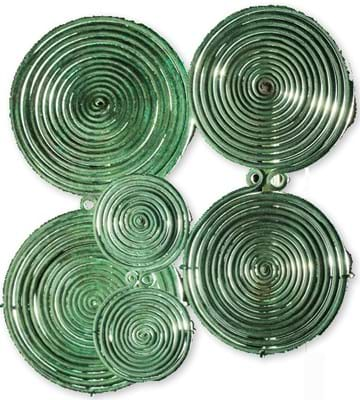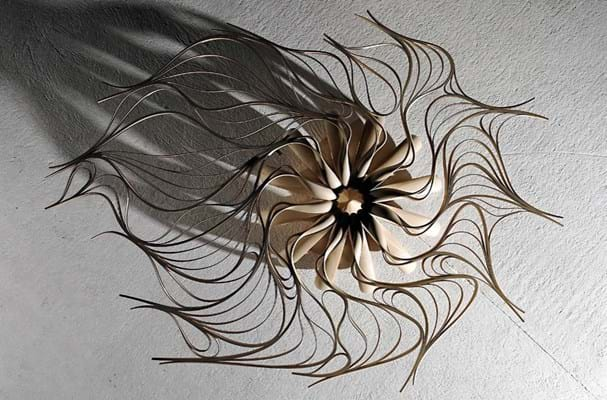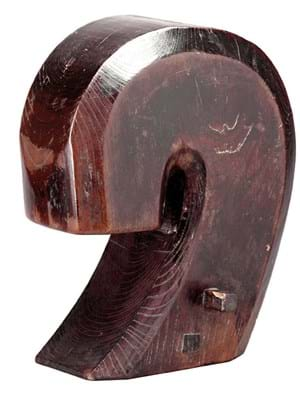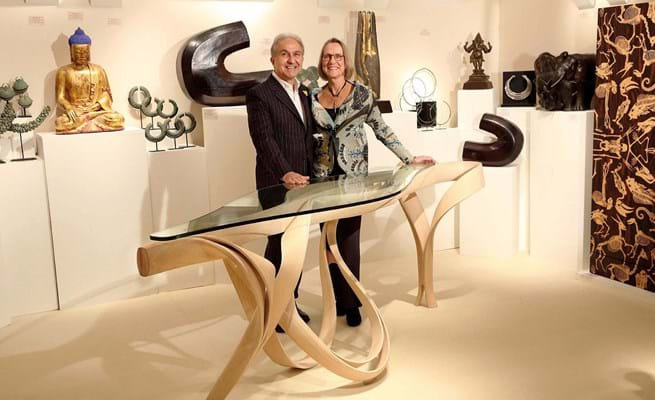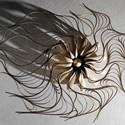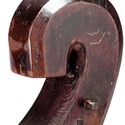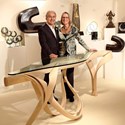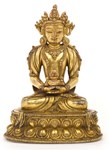Interview
WE’VE been chatting in the living room for about an hour, sipping coffee in low, comfortable armchairs, when one of the Petrous makes an offhand reference to narwhal tusks, with a gesture to a spot just behind me. So packed is their north London home with wonders that until this moment I hadn’t noticed the teeth towering behind me like giant stalagmites.
The house from which Peter Petrou runs his dealership with his wife Leonora is reminiscent of Oxford’s Pitt Rivers Museum, except that all the objects have escaped from their display cases. They’re surrounded by a well-organised crush of curiosities.
The pair, established in the London antiques trade for more than 40 years, are serious about their business but not averse to the odd, mischievous comment, often pitched to make the other laugh.
Sitting in front of the fire together on a drizzly February day, it’s easy to feel at home.
Still, they are tight-lipped when they need to be. When I ask Peter what suggestions he’s made as a board member of BADA (British Antique Dealers’ Association) he couldn’t possibly comment. Except, he adds with a twinkle, he has suggested it updates the title to the British Art Design Antiques Society – “which spells ‘BADAS(s)’!”
“Nobody would forget it, ” he insists, as Leonora laughs.
The ‘Petrou look’
They’re more than forthcoming as they describe the ‘Petrou look’ created by what they say is a mix of pieces from “around the world and throughout history” up to the present day, united by a “timeless feel regardless of age”.
That’s still a wide spectrum and includes pieces such as Ibeji beaded coats, Zulu earplugs, early 20th century French didactic flowers, Japanese Kutani models and European Bronze Age torcs. The two dealers also have a particular interest in cross-cultural items, such as objects made during the Portuguese presence in Goa.
“It’s not consciously done, ” Peter adds. “Sometimes we buy all this stuff and think ‘crikey, how are we going to make all this hang together?’
But I think subconsciously we’re buying for a reason.”
The pair don’t have a gallery and never hold individual exhibitions (“our clients are so diverse, what would the guest list be?”), but they transport their “look” to each fair they attend. Next in the calendar is their inaugural appearance at the newly rebranded BADA 2017, where they’re prepared to help shake up the event with their distinctive aesthetic and a few contemporary pieces.
The Petrous’ stock has not always been so eclectic. Peter got his start apprenticing at a London Continental and English furniture dealer in the early 1970s and since then “it’s been an evolution”.
After starting with furniture and clocks, the couple moved on to Japanese and Chinese works of art, and later ethnographic, Pacific and African pieces. “When we were training it was crucial to have good general knowledge. Anything that came your way, if you understood it, you could buy it, ” he says.
Peter is well aware that many of his generation specialised, but calls this tendency “boring”. He estimates that they have 10 areas of specialist interest, including pre-1800 sculpture, the area he is often called on to vet at fairs.
“If you’re a specialist in Georgian furniture you can probably learn all there is to know about it, ” Leonora says. But if you deal across the board in so many areas you’re working all the time. It’s who you are.”
It is, they add, like doing a degree in a different specialist area every three years. After more than 40 years of dealing, that’s a lot of diplomas.
A willingness to adapt and change is crucial, even in the antiques trade. “I’ve always maintained that we’re in the fashion business, ” he says.
Today the younger generation is looking beyond the treasures their parents collected, so the pair have dropped traditional furniture in favour of unusual items that could be used to decorate. Although, Peter adds, “it can’t just be a decorative object”. Each piece must be “something that isn’t representative of its period but still has a historical background”.
Several years ago, they started commissioning contemporary furniture, adding a line of pieces that, while still unusual and one of a kind, might appeal to their audience.
They were rewarded with a rise in the popularity of contemporary ‘art design’ furniture.
Out of these collaborations came Lilium 1, a three-metre-long table-like sculpture by Irish designer Joseph Walsh. It is this piece which inspired the Petrous to exhibit at BADA 2017.
Lilium 1 will be suspended in the entrance to the event venue, a strong indication of how the fair is expanding its identity. Its presence was agreed on before that of the Petrous, who eventually decided that taking a stand would offer visitors and clients some “follow through” after the opening piece.
Five years ago, the Petrous say, they wouldn’t have taken a stand at the event and they still describe it as a “traditional antiques fair” run by an organisation trying to shed what they feel is an outdated image.
But they are open to the changes going on at the fair and beyond. They speak enthusiastically about board chairman Michael Cohen, CEO Marco Forgione and fair organiser Madeleine Williams as a forwardthinking team building a new brand.
“BADA is diversifying and they don’t just want to be concentrating on antiques and older works of art, ” Leonora says. Peter adds that the emphasis is being put on “quality” rather than “if something is old or new”. An object can be poor quality whatever its age, after all.
They’re going into the fair with an open mind and a sense of responsibility to help the association, and the industry as a whole, progress.
If it goes well the couple foresee the possibility of becoming regulars; they certainly support fairs in principle.
“You have to be pro-fair these days, ” Leonora adds. “People just don’t do that. It’s better for business when there are lots of dealers grouped together. There’s a reason for shopping centres: they work.”
In the family
Each room of their house might be packed with objects, but they’re constantly restocking. They try to avoid the husband-and-wife routine: one likes it, the other doesn’t, together they end up with nothing.
So the system is that Leonora acts as vetter for Peter’s purchases, though there’s rarely a disagreement.
“And obviously, I’m always right, ” she says.
“It’s extremely irritating. She does bring me to my senses, ” he says. “You have to work with somebody who has the same eye to buy as you. And who can put reason into what you’re doing, which is what Leonora does.”
They are two dealers who are grounded by their shared enthusiasm for their work and their affection for one another. “I think those people are lucky who find their passion.
People ask us if we have any hobbies, but this is what we do. What greater privilege could you possibly have?” says Peter.
Curriculum Vitae
Peter Petrou
1970-74
Apprenticed to London dealership
1974-80
Supplier to retail outlets in Paris and Lille
1980-1990
Gallery in Lisson Grove, London
1990-2003
Gallery in Notting Hill, London
2003-2016
Exhibited at major international fairs including Fine Art and Antiques Fair, Olympia London, The Grosvenor House Fine Art and Antiques Fair London, The Winter Antiques Show New York, Masterpiece 2012-16 and PAD 2016.
Leonora Petrou
1974-75
Studied Fine Art Sculpture
1976-80
Marketing for hotel management company with properties in East Africa
1980
Joined ‘Peter Petrou’ and have worked together since, with a focus on research, marketing, website, IT


